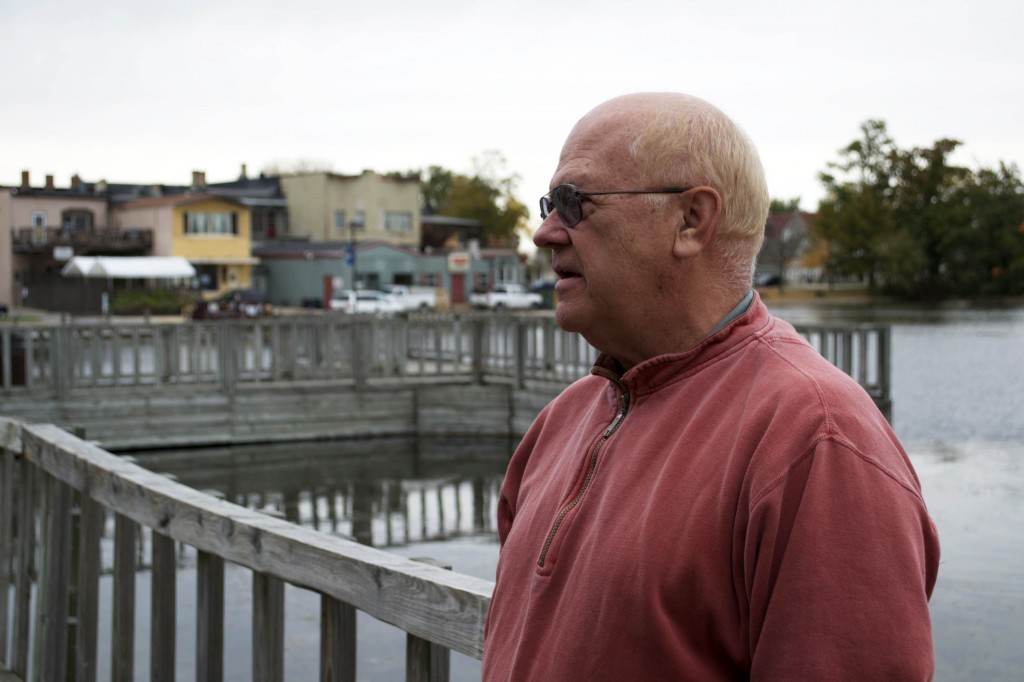Exploring political polarization in one of Wisconsin’s most conservative counties
By: Sam Easton
Keith Best stands in Waukesha’s Victory Center, the GOP headquarters in Wisconsin’s most conservative county. Romney/Ryan bumper stickers and sidewalk signs sit neatly on tables while volunteers work the phones. A small radio circulates the voice of right-wing talk show host Mark Belling while the parents of Governor Scott Walker—a national Republican icon—walk through the office. An ardent Republican, Best grows passionate as he covers the party’s talking points.
Dick Pas sits in his favorite restaurant in nearby Oconomowoc, sipping hot cider. As classic rock plays softly in the background, he speaks slowly and thoughtfully about living in a city that voted 85 percent Republican in the recent gubernatorial recall. A vocal Democrat, he grows resigned as he reflects on the increasing tilt toward the GOP in his county.
More than just two people with opposing political views, Best and Pas may be emblems of an issue greater than themselves. Their experience in Waukesha County sits against a backdrop of increasing polarization in the state and the nation. As Best happily describes the GOP’s domination of county politics and Pas speaks of resignation to reality, the pair beg the question: Is there a future for bipartisan agreement on policy and, more importantly, for pluralism in the United States?

Photo by: Sam Easton
Evidence of Polarization
More than just academic jargon, political polarization is a growing concern for the nation as a whole. Kenneth Mayer, a UW-Madison political science professor, speaks about Gallup’s work tracking national presidential approval ratings and how those numbers relate to the increasing intensity and polarization of political opinion.
If the difference in Republican and Democratic approval of a certain president is not that high, so goes the difference in feelings on other political issues. In the not-so-distant past, the numbers actually looked similar. Recently however, Mayer says, “if you look at the 10 years where people had the biggest partisan views of the president, eight of them were past [the year] 2000.”
Mayer says this could be one of the reasons feelings would intensify all the way down to the local level. “Notice the Wisconsin recall, many Democrats expressed total distain and loathing for Gov. Walker, while Republicans felt the opposite. There was not a lot of common ground where you could just sit down and have the parties work on political compromise. There seems to be lots of indicators that it’s rarer than it was.”
The American National Election Studies Organization records data to determine how liberal or conservative respondents are when asked a variety of questions. The more consistently one-sided the answers are, the more polarized one’s viewpoints. Among groups who were highly knowledgeable about and highly interested in politics, like the citizens of Waukesha, the past three decades have led to a dramatic increase in polarization of opinion.
This increase has made Waukesha into one of the most conservative counties in Wisconsin, collectively voting to elect a Republican candidate in every presidential election since 1964. It is at the point now where Republicans don’t need to interact with Democrats at all. “There is not a single assemblyman, not a single state senator anywhere in Waukesha County who is a Democrat. The people in the courthouse, the sheriff and the district attorney are all Republican,” Best explains.
This is a county where every legislative position is held by a Republican, though about a third of voters went Democratic in the most recent presidential election.
Pas argues that no one gains when some don’t have a say. “Talking about politics is dramatically harder, and it’s a huge loss for the city, county, state and country.”
